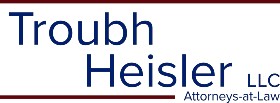Gary Wallace v. New Balance Athletics, Inc. – The Appellate Division affirmed the ALJ’s determination that injuries sustained while walking across a public street on the way to work arose out of and in the course of employment. In Wallace v. New Balance, Dec. No. 22-30 Mr. Wallace suffered multiple injuries on 11/26/19 when he was struck by a car on a public street separating the employee parking lot from the building he worked in. Mr. Wallace customarily parked in a lot directly across a public street from the plant. This lot was leased by New Balance for exclusive use by its employees and required a sticker to park there. It also provided two lots on the same side of the street as the plant. Employees were free to park anywhere in the three lots except for those designated for visitors and managers. On 11/26/19 Mr. Wallace arrived early morning before sunrise. He ate breakfast in his car and then walked to the edge of the lot to smoke a cigarette off the lot to comply with the no smoking on premises rule. He then proceeded to the plant and was struck by a vehicle when he was about ¾ of the way across the street but outside the cross walk.
The ALJ granted Mr. Wallace’s petition for award and petition for payment of medical expenses concluding that while the occurrence falls within the “going and coming” rule, the “special hazard” exception applies. New Balance appealed arguing that the claim was barred by the “going and coming” rule or “public street” rule because it occurred on a public street before Mr. Wallace arrived on the employer premises to start his shift. The “going and coming” rule provides that an accident occurring off the employer’s premises while an employee is merely on his way to or from his place of business, is not, without more, compensable. The panel reviewed the case law supporting several exceptions to this rule including the “special errand”, “traveling employee”, “dual purpose” and traveling for compensable treatment exceptions. Citing Law Court cases of Robert’s Case (1924) and Oliver v. Wyandotte Industries (1973) where the circumstances created by the employer increased the hazard, the ALJ found no error in the ALJ’s determination the case fit within the “special hazard” exception. New Balance placed the lot across the public street and had the work shift begin before sunrise at a time when the street was busy with employees arriving to work. The general public was not exposed to this hazard as visitor parking was on the same side of the street as the plant. Having upheld the conclusion the case fell within an exception to the “going and coming” rule, the panel then upheld the ALJ’s application of the nonexclusive list of factors set forth in Comeau to determine the injuries were compensable generally.
To view this decision, click here.
If you have any questions about this case or any other workers’ compensation matter, please let us know.
